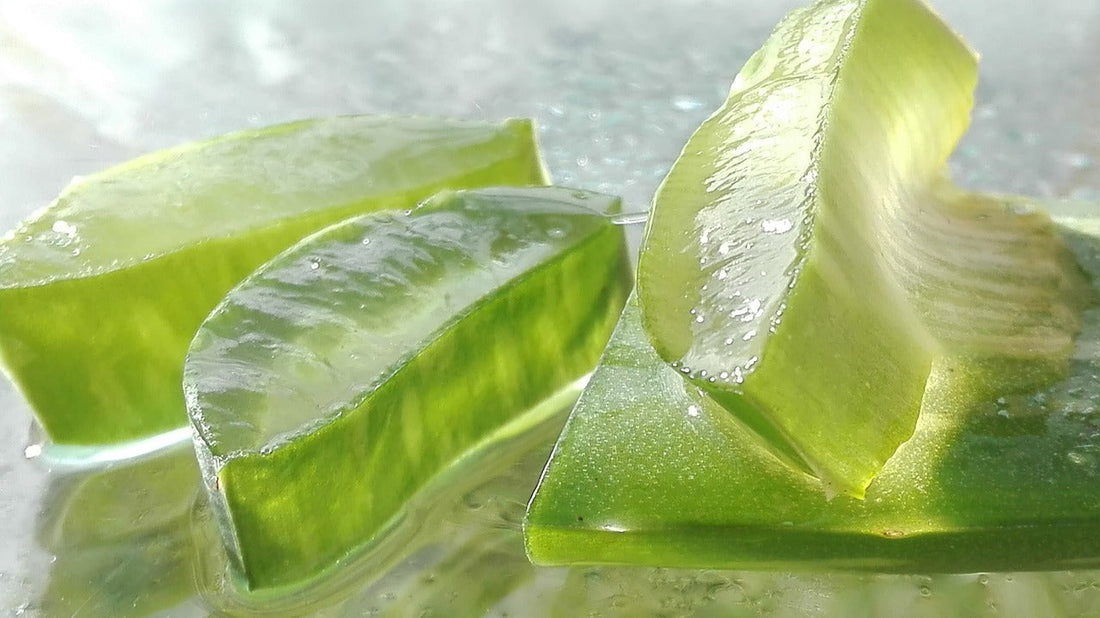Aloe Vera is a versatile plant known for its soothing and healing properties. Using raw Aloe Vera can offer numerous benefits for skin care, digestion, wound healing, and hair care. Here's a comprehensive guide on how to properly use raw Aloe Vera.
Step 1: Harvesting Aloe Vera
Choose a mature Aloe Vera leaf from the outer part of the plant, as these contain the most nutrients.
Cut the leaf close to the base using a sharp knife.
Wash the leaf thoroughly to remove any dirt or residue.
Allow the leaf to sit upright for a few minutes to drain the yellow latex (aloin), which can be an irritant.

Step 2: Extracting the Gel
Lay the leaf flat and trim off the spiky edges carefully.
Slice the leaf lengthwise to expose the gel inside.
Use a spoon to scoop out the clear, thick gel, avoiding the yellow latex (aloin), which can cause skin irritation and digestive issues.
Step 3: Using Aloe Vera Gel
We sell an already prepared Aloe Vera inner leaf gel fillets which are ready to use.

For Skin Care:
Apply the gel directly to the skin for hydration and soothing burns.
Use it as a natural face mask by mixing it with honey for glowing skin.
Aloe Vera can help reduce acne and inflammation due to its antibacterial properties.
Mix Aloe Vera Gel with coconut oil for a hydrating body lotion.
For Wounds and Burns:
Apply a thin layer of gel to minor cuts, sunburns, or insect bites for faster healing.
Research indicates Aloe Vera can accelerate wound healing due to its collagen-boosting properties (Surjushe et al., 2008).
Aloe vera's antimicrobial properties can help prevent infection in minor wounds.
For Digestion:
Blend a small amount of Aloe Vera gel with water or juice.
Drink it in moderation to aid digestion and reduce inflammation.
Aloe Vera contains enzymes that can support better nutrient absorption (Hamman, 2008).
Drinking Aloe Vera juice may help relieve symptoms of acid reflux and constipation.
For Hair Care:
Massage Aloe Vera gel into the scalp to reduce dandruff and promote hair growth.
Mix with a few drops of essential oils like lavender or tea tree for an enhanced scalp treatment.
Aloe Vera can act as a natural conditioner, leaving hair soft and shiny.
Step 4: Storing Aloe Vera
Store unused Aloe Vera gel in an airtight container.
Refrigerate for up to a week to keep it fresh.
Freeze Aloe Vera gel in ice cube trays for extended use.
Adding vitamin C powder can extend the shelf life of homemade Aloe Vera gel.
Step 5: Potential Side Effects and Precautions
Avoid consuming excessive Aloe Vera gel as it may lead to digestive discomfort or electrolyte imbalances.
Pregnant or breastfeeding individuals should consult a healthcare professional before using Aloe Vera internally.
Perform a patch test before applying Aloe Vera topically to check for allergic reactions.
Conclusion
By following these steps, you can maximize the natural benefits of raw aloe vera in your daily routine. Its diverse uses for skin care, wound healing, digestion, and hair care make it a valuable addition to holistic wellness practices. Always test a small patch of skin first to ensure no allergic reactions and consult a healthcare professional before ingesting aloe vera, especially if you have health concerns.
References:
Surjushe, A., Vasani, R., & Saple, D. G. (2008). Aloe vera: A short review. Indian Journal of Dermatology.
Hamman, J. H. (2008). Composition and applications of Aloe vera leaf gel. Molecules.
Reynolds, T., & Dweck, A. C. (1999). Aloe vera leaf gel: a review update. Journal of Ethnopharmacology.
How to user Aloe Vera Plant: Benefits, Risks and More https://www.healthline.com/health/how-to-use-aloe-vera-plant
Other Information
https://ourpermaculturelife.com/how-to-use-your-fresh-raw-aloe-vera-as-a-leave-in-hair-conditioner/


